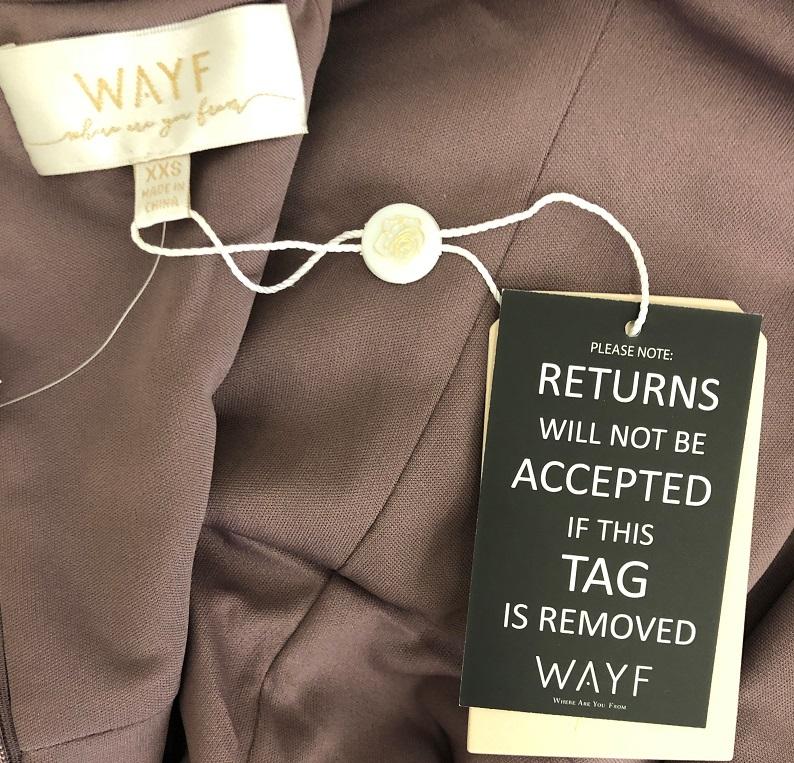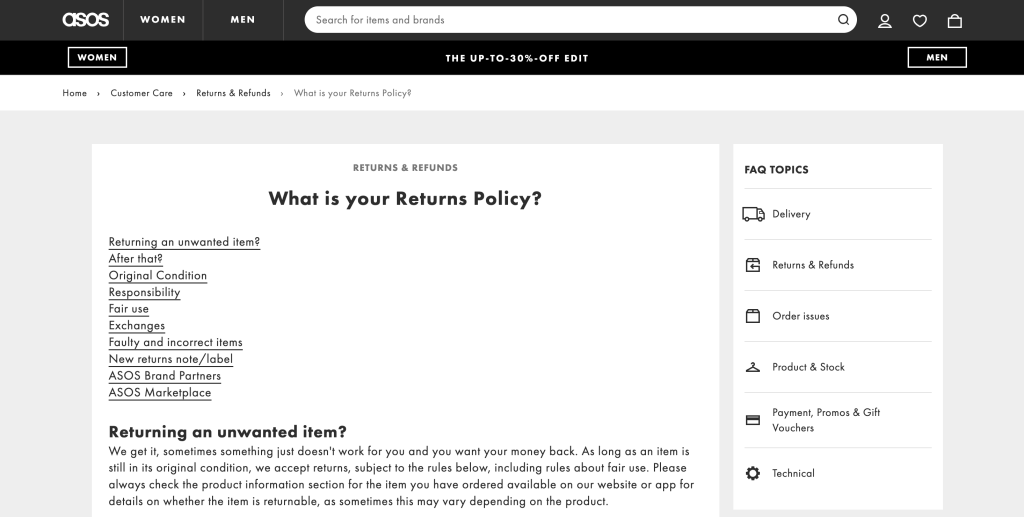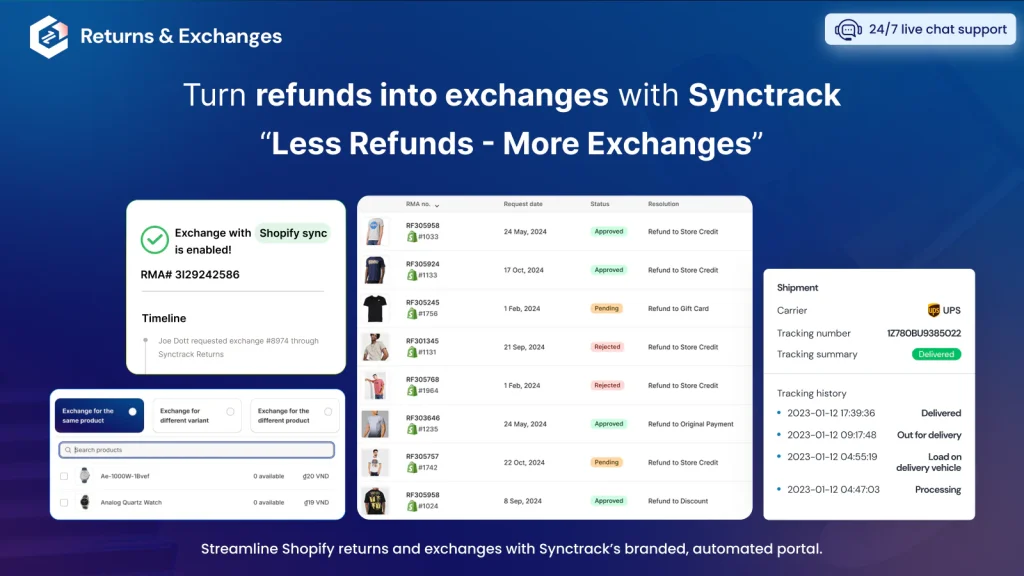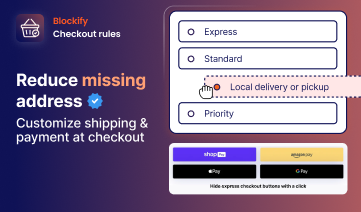Ever seen someone buy a fancy dress, wear it to a party with the tags hidden, and return it the next day? That’s wardrobing – and it’s costing stores billions. While the customer walks away with their money back, retailers are left dealing with merchandise they can’t sell as new. Let’s break down this growing problem and explore how stores can protect themselves without driving away honest customers.
What Is Wardrobing?
Wardrobing is a type of return fraud where customers buy items, use them once or twice, and then return them for a refund. It’s like getting a free rental at the store’s expense.
Many shoppers don’t see it as stealing. In fact, a survey of UK consumers shows that 31% believed that wardrobing—buying an item, using it, and then returning it—does not count as fraud. Among younger shoppers, it’s even more common – about half of Gen Z shoppers have done it without thinking twice.
But not with the store owners. That’s why most stores have return policies saying items must be unused, but proving something was worn can be tricky. Unless there’s obvious damage, many retailers end up accepting these returns to avoid customer complaints.
The Impact of Wardrobing on Businesses
Wardrobing hurts stores in several ways:
Money Lost: When someone returns a used item, it often can’t be sold as new again. In 2023, fraudulent returns (including wardrobing) cost U.S. retailers about $101 billion. For every $100 in returned merchandise, stores lose about $14 to fraud.
Extra Work: Processing returns takes time and staff. Employees must inspect items, repackage them, and decide if they can go back on shelves. The labor cost adds up – handling a $50 return can cost a store about $33 in staff time and processing – Reverse Logistic Association found.

Inventory Problems: Wardrobing messes up inventory planning. A store might think an item sold out (and order more), only to have many come back after a holiday or event. This creates a cycle of first not having enough, then having too much.
Customer Trust: If a used item accidentally gets put back on the shelf as new, the next customer who buys it will be unhappy. This damages the store’s reputation and can lead to negative reviews.
Higher Prices: To make up for these losses, many retailers raise prices for everyone. Honest customers end up paying more because of other people’s fraud.
Real Examples of Retailers Fighting Back Wardrobing
Bloomingdale’s B-Tag Initiative

Bloomingdale’s, a luxury department store chain, pioneered an anti-wardrobing strategy that changed how retailers protect high-value clothing.
Problem
The store was experiencing frequent returns of expensive dresses with clear signs of wear. Staff could tell these dresses had been worn to special events before being returned. With industry-wide losses from wardrobing estimated at $8.8 billion annually, Bloomingdale’s needed a solution that wouldn’t alienate honest customers.
Solution
In 2013, Bloomingdale’s introduced the “B-tag” – a conspicuous 3-inch black plastic tag attached to all dresses priced over $150. The tags were deliberately placed in highly visible locations that couldn’t be hidden when the dress was worn. Customers could remove the tag if they decided to keep the dress, but once removed, the item became non-returnable.
Key Result
Returns of formal dresses dropped dramatically. The tags made it impossible to “borrow” a dress for an event without the tag showing. Other retailers quickly adopted similar approaches – Nordstrom eventually implemented paper return tags on special-occasion dresses, while brands like Self-Portrait and BCBG Max Azria created their own versions of return tags sewn into visible areas.
Super Bowl TV Rental Problem
Electronics retailers face a unique wardrobing pattern tied to major sporting events, particularly the Super Bowl.
Problem
Stores like Best Buy, Walmart, and Target noticed a predictable pattern: large TV purchases in late January followed by a surge in returns in early February. Customers were buying big-screen TVs solely for Super Bowl parties, then returning them afterward. Data showed consumers returned twice as many TVs in Q1 (Jan–Mar) compared to Q4 (Oct-Dec), with the first quarter becoming the peak for TV returns.
Solution
Electronics retailers implemented several strategies:
- Stricter return windows during sports seasons
- Restocking fees specifically for opened TV returns
- Tracking of serial returners through customer systems
- Special verification processes for big-ticket returns
Key Result
While the problem hasn’t disappeared completely, these measures have reduced the financial impact. Stores like Costco now flag or occasionally deny excessive electronics returns from repeat offenders. The targeted approach allows them to maintain customer-friendly policies for most shoppers while addressing the “free rental” problem.
ASOS’s Data-Driven Approach

ASOS, a major global online fashion retailer, tackled wardrobing through sophisticated data analysis rather than physical deterrents.
Problem
The rise of social media “haul” videos and try-on culture led to customers ordering excessive amounts of clothing, wearing items briefly for photos or events, then returning most purchases. With no physical store to inspect returns, ASOS faced unique challenges in identifying used merchandise.
Solution
ASOS updated its returns policy in 2019 and again in 2023, focusing on data patterns. They:
- Introduced a “Fair Use” policy warning that suspicious accounts would be investigated
- Began charging certain customers a returns fee (£3.95) if flagged for excessive returns
- Specifically targeted customers who consistently kept less than £40 worth of items per order
- Used algorithms to identify return patterns suggesting abuse
Key Result
While the policy change sparked some controversy, ASOS successfully reduced return abuse by targeting only a small percentage of customers showing clear wardrobing patterns. Their approach demonstrated how online retailers can use data to identify and deter wardrobers without implementing blanket restrictions that might frustrate honest shoppers.
Amazon and Sephora Account Bans
Even the most customer-centric retailers have implemented strict consequences for serial return abusers.
Problem
Despite their focus on customer satisfaction, companies like Amazon and Sephora discovered some shoppers were taking advantage of lenient return policies to an extreme degree, returning an unusually high percentage of purchases often with signs of use.
Solution
- Amazon quietly implemented a system to identify and ban customers who return too many items
- Sephora and other retailers (including Home Depot and Best Buy) began using services that track return patterns through ID scanning
- These companies created thresholds (not publicly disclosed) for acceptable return behavior
- For the worst offenders, they implemented account closures or return privileges revocation
Key Result
These measures are typically used only in egregious cases, but they send a powerful message: even the most customer-friendly retailers have limits. The policy gives stores a last resort for dealing with chronic wardrobers while still maintaining generous return policies for the vast majority of customers. It demonstrates that retailers are willing to lose a problematic customer rather than continue absorbing fraudulent return losses.
How To Prevent Wardrobing?
Here are strategies that work for all kinds of retailers:
Use Special Tags
Those visible tags like Bloomingdale’s use work extremely well. For clothing, place tags in spots that show when worn – like the front of a dress or the outer seam of pants. For electronics or other items, use tamper-evident seals that show if the product was used.

These tags don’t have to be fancy or expensive. Even large paper tags placed in obvious spots can work. The key is making them visible enough that the item can’t be used without removing them.
Check Returns Carefully
Train your staff to look closely at returned items. Signs of use include:
- Clothing: makeup marks, deodorant stains, perfume smell, wrinkles
- Electronics: fingerprints, settings changed, removed protective film
- Tools: wear marks, dust, or dirt in crevices
Take photos of returned items when possible, especially expensive ones. This helps if there’s a dispute about the condition.
Update Your Return Policy
Make your policy very clear about not accepting used returns. Post it prominently in your store and on receipts. You might consider:
- Shorter return windows for categories prone to wardrobing (like formal wear)
- Small restocking fees for opened items
- Store credit instead of cash for certain returns
Take a look at ASOS’s example here.

The goal is to discourage wardrobing without making returns too difficult for honest customers.
Track Return Patterns
Use your point-of-sale system to identify suspicious patterns:
- Customers who buy expensive things before weekends and return them after
- Returns that always happen after holidays or events
- Someone who returns a very high percentage of purchases
When you spot a pattern, you might flag that customer for extra return inspection or require manager approval for their returns.
Offer Alternatives
Some people wardrobes because they need items temporarily. Consider offering:
- Rental options for special occasion items
- “Try before you buy” programs where customers pay a small fee to test products
- Samples or demos for electronics
This gives customers a legitimate way to use items briefly without resorting to wardrobing.
Train Your Staff
Make sure employees understand:
- How to spot signs of used merchandise
- The financial impact of accepting fraudulent returns
- How to politely decline returns that violate policy
- When to involve a manager
Role-play difficult situations so staff feel comfortable handling them.
Use Return Technology
Managing returns can quickly become overwhelming, especially when trying to spot wardrobing patterns manually. Many retailers struggle with time-consuming return processes, inconsistent policy enforcement, and difficulty identifying suspicious behavior.
If you can afford it, consider return management software that:
- Tracks return patterns across multiple stores
- Flags suspicious returns automatically
- Requires extra verification for high-risk situations

Synctrack Returns & Exchanges is one of them. Synctrack offers a targeted solution designed for merchants dealing with return fraud. The app includes:
- Customizable return rules that flag potential wardrobing based on purchase history
- Manager approval workflows for suspicious returns
- Customer return pattern tracking across your store
- Consistent policy enforcement with automatic eligibility checking
- A streamlined returns portal that integrates with existing systems
Synctrack balances fraud prevention with customer experience by only adding verification steps for suspicious activities while allowing legitimate returns to process normally. This approach protects businesses from wardrobing without creating unnecessary friction for honest customers.
For merchants looking to address return fraud, automated solutions like Synctrack provide the necessary data insights to combat sophisticated wardrobing tactics effectively.
The Right Balance
The tricky part about preventing wardrobing is finding the balance. Too strict, and you’ll frustrate honest customers – 55% of shoppers avoid stores with harsh return policies. Too lenient, and your profits disappear.
The best approach targets the small number of people abusing the system rather than punishing everyone. As one retail expert puts it: “Your goal is to make wardrobing difficult while keeping returns easy for good customers.”
Consider these questions when setting your strategy:
- Which products in your store are most likely to be wardrobed?
- What’s the right return window for different categories?
- Can you use physical deterrents like tags on high-risk items?
- How will you identify repeat offenders?
Wardrobing FAQs
What is the difference between wardrobing and bracketing in online shopping?
Wardrobing is when someone buys an item, uses it for a special occasion, then returns it for a full refund. Think of buying a fancy dress for a wedding, wearing it once, then returning it claiming it wasn’t right.
Bracketing is when a shopper buys multiple versions of the same item (different sizes or colors) planning to keep only what fits or looks best and return the rest. Like ordering shoes in two sizes and three colors, then returning five pairs after trying them on at home.
Both practices create challenges for retailers, but bracketing is generally considered a legitimate shopping approach while wardrobing is viewed as return fraud.
What does wardrobing mean?
Wardrobing is when someone buys clothes, accessories, or electronics, uses them once or twice, and then returns them for a full refund. Think of it as getting a free rental at the store’s expense. Many retailers consider this return fraud because the items often can’t be resold as new.
What is the trend of wardrobing?
Wardrobing has grown into a major headache for retailers. The National Retail Federation found that return fraud, including wardrobing, costs stores about $12.6 billion yearly. Young shoppers are the biggest culprits, with many millennials and Gen Z customers seeing nothing wrong with the practice.
Social media has made things worse. As people feel pressure to post new outfits constantly, more shoppers buy items just for photos or special events, then return them afterward.
How common is wardrobing?
Wardrobing happens more than you might think:
- About 1 in 5 shoppers admit they’ve done it at least once
- A shocking 43% of buyers between 16-25 years old say they plan to keep doing it
- Young shoppers return 20-22% of what they buy, much higher than older customers
These numbers show why retailers are getting serious about preventing wardrobing – it’s cutting deeply into their profits.
Final Thoughts
Wardrobing isn’t going away, but you don’t have to accept it as a cost of doing business. With the right mix of policy, training, and tools, you can significantly reduce return fraud without harming the shopping experience.
Remember that most customers are honest. By focusing your efforts on deterring the small percentage who abuse returns, you protect your bottom line while still providing great service to everyone else.
Every dress that doesn’t come back worn, every tool that isn’t “borrowed” for a weekend project, represents money saved – and that’s good for both your business and your honest customers who don’t have to subsidize fraud through higher prices.








